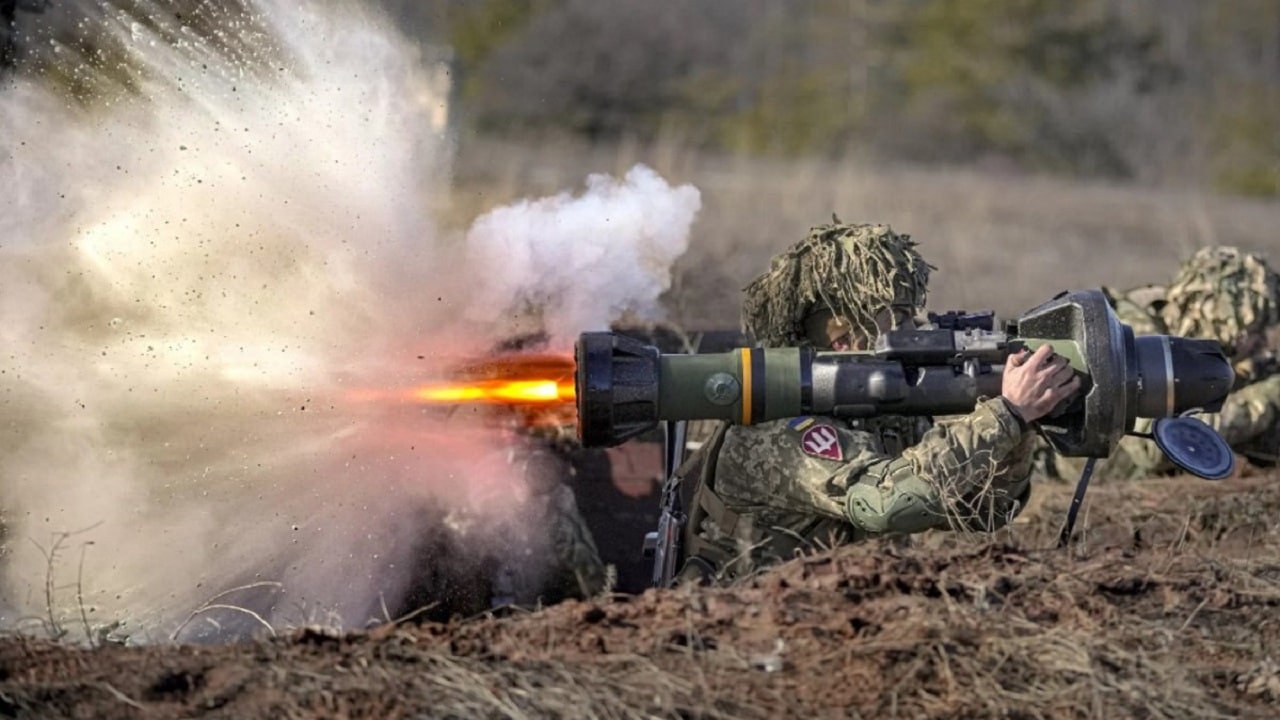One of the lesser recognized yet equally impactful anti-armor weapons being used in the Russia-Ukraine war is called NLAW, a lightweight, portable missile used by dismounted infantry.
The weapon was made by Saab Bofors Dynamics as a joint UK-Swedish venture intended to bring new weapons support to infantry on the move in combat.
As a portable, lightweight weapon, the NLAW is an optimal weapon to be used in an ambush by maneuvering soldiers as well as hit-and-run attacks on light armored vehicles, buildings, or concentrated groups of enemy fighters.
The weapon is optimally suited for top-down attacks as it may not fully penetrate heavy armor but is likely to be extremely lethal if used to attack more vulnerable areas of an enemy vehicle from an elevated position. It has night vision for targeting, and both a point-of-contact and proximity fuse detonation. The NLAW fires a standard HEAT or “high-explosive-anti-tank” round.
Available specs say the NLAW is a Line-of-Sight weapon, meaning it is guided by direct human targeting within line of sight, using a soft-launch system. It is a one-shot disposable weapon that can be discarded after use, but as a highly transportable weapon, the NLAW has proven effective against Russian vehicles in Ukraine.
NLAW vs. Javelin
The NLAW has been used alongside the similar and well-known Javelin anti-tank missile, which has also proven effective in Ukraine. While the Javelin is a soldier-portable weapon as well, it is longer-range and potentially more lethal than the NLAW.
The NLAW is a close-in-fight weapon, even more than a Javelin as it has a shorter range of roughly 1,000 meters. The NLAW is a weapon that infantry can use against vehicles in any exchange of fire or combat encounters with a larger mechanized force.
This kind of weapon has been critical for Ukrainians as part of the ongoing push to stop Russia’s invasion and continue to reclaim territory. The United Kingdom reportedly sent 2,000 NLAWs to Ukraine in March of 2022, and the weapons have reportedly been extremely successful against Russian vehicles. The NLAW’s HEAT warhead is likely quite similar to the Javelin, yet with a clearly shorter range and without the advanced optics, targeting, and range now built into the Javelin.
There is also a tactical component to the NLAW and similar anti-tank weapons, meaning can be used from dismounted, disaggregated positions against tanks and other vehicle targets.
Ukrainians have been using elevated positions to attack tanks where they are most vulnerable. Multiple reports and open-source data on the war suggest Ukrainians have destroyed at least 1,000 to 2,000 Russian tanks.
MORE: The War in Ukraine Is About to Explode
MORE: Does Putin Have Cancer?
Kris Osborn is the Military Affairs Editor of 19FortyFive and President of Warrior Maven – Center for Military Modernization. Osborn previously served at the Pentagon as a Highly Qualified Expert with the Office of the Assistant Secretary of the Army—Acquisition, Logistics & Technology. Osborn has also worked as an anchor and on-air military specialist at national TV networks. He has appeared as a guest military expert on Fox News, MSNBC, The Military Channel, and The History Channel. He also has a Masters Degree in Comparative Literature from Columbia University.

